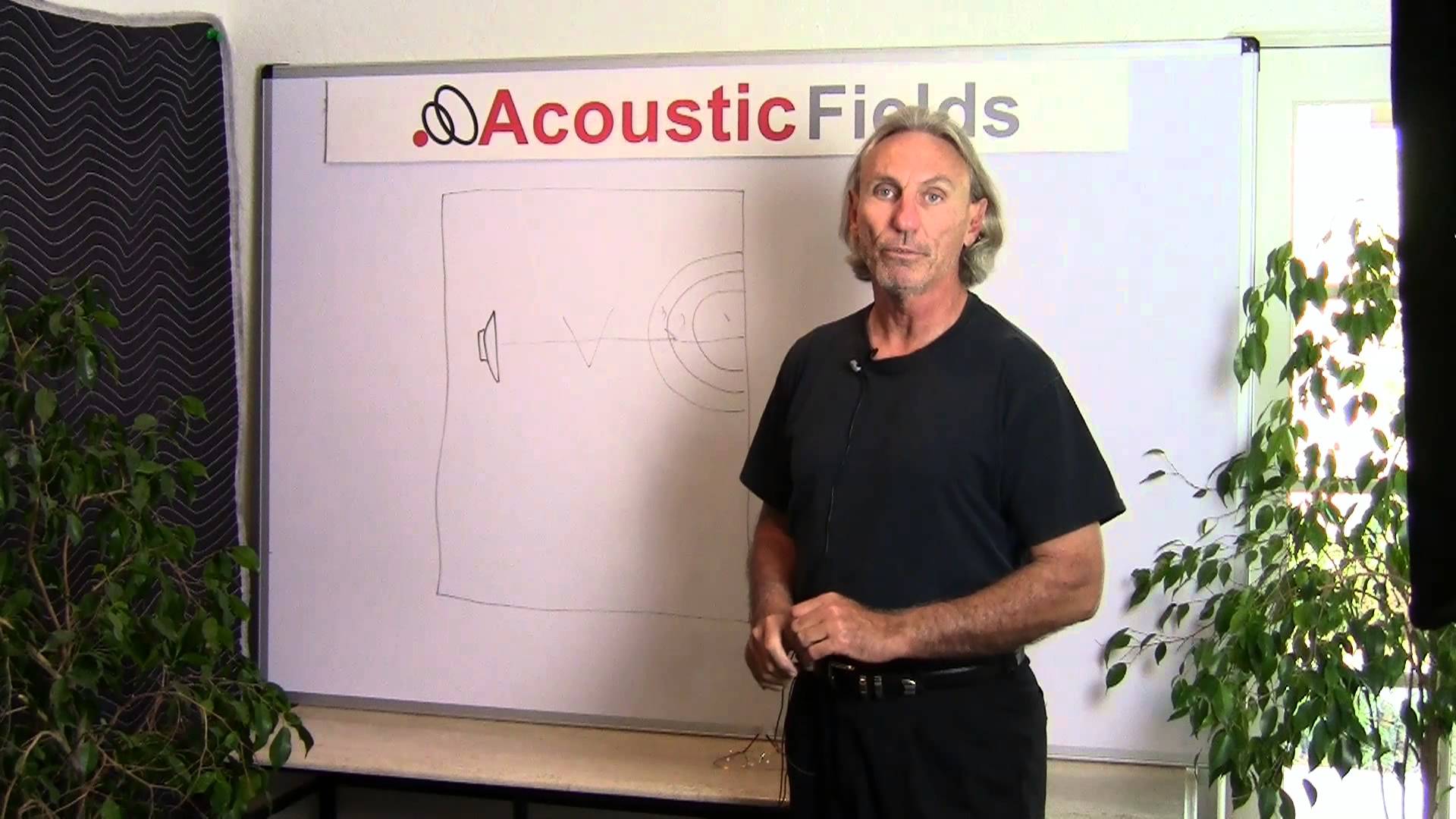Sound velocity is about the movement of sound through the air. Sound pressure is the force created by sound energy. Both of these concepts are different and require different approaches to their acoustical management. Sound velocity is about molecular movement. Sound pressure is about the accumulation of sound energy within the room. Both of these issues depend on the frequencies that create them.
How Sound Velocity And Pressure Affect Room Treatment
The movement of sound through air occurs at middle and high frequencies which are above 125 Hz. The issue of sound pressure within your room is focused on frequencies below 125 Hz. As air and sound move through your room, it then strikes all of your room boundary surfaces. Some of this energy is reflected back into the room, some will accumulate along the intersections of your walls, floor, and ceiling. Each of these sound/air moving issues must be dealt with using the appropriate room treatment technologies.
In This Week’s Video…
I discuss the difference between air and sound movement and sound pressure. I discuss how both require different acoustical treatments. We will look at the different treatment options and explain how they work for both sound and air movement vs sound pressure absorption issues. I also discuss how acoustical product manufacturers confuse the issues and state that their product can do “everything” when the laws of physics say otherwise.
Energy Above 125 Hz.
For frequencies above 125 Hz., foams and limp mass materials work well to absorb this sound found in this molecular movement. The air moves through the material and this air movement creates friction between the cells of the foam or the fibers of the limp mass materials. Friction produces heat and your sound energy is then changed into a new energy form called heat. With this change to heat comes a reduction in the strength of each frequency. The thickness of the material will determine which frequencies are impacted the most.
Energy Below 125 Hz.
For frequencies below 125 Hz., you must deal with longer wavelengths and longer waves produced by lower frequencies are all about sound pressure creation. Longer, low frequency waves that do not fit into your room, do many things. Some decide to leave the room and go visit adjacent rooms. Some stay around and create pressure pockets within the room that can smother certain frequencies and exaggerate others.
Sound Pressure
Sound pressure must be treated with sound pressure reactive technologies. You can not use the same technology to deal with sound velocity as you do sound pressure. As you saw in the above video I explained why this is so and about the differences in the two technologies and why today, acoustical product companies try and confuse the issues. They confuse the issue so you will buy their product without realizing it will not work in your application.
In Summary
I hope this explanation helped. Please leave any comments below so I can get back to you. Don’t be afraid to hit those Facebook like, Google+ and Twitter buttons on the left hand side so other people can see this post. And if you want to learn more about this subject please sign up for our free room acoustic treatment videos and ebook which provide step by step instructions. Get instant access by signing up now.
Thanks
Dennis








We use broadband absorption in the two most critical frequency regions in small rooms. Our Diaphragmatic absorbers, ACDA series, have…
Interesting web site and provocative introduction. Please check your copy for typos, otherwise nicely presented. I would like to see…
There is no such thing as soundproof anything especially carpet. Low frequency noise transmission requires a permanent construction fix with…
Hello Dennis! Our neighbors put a Ice Bath in their garage which is right below our bedroom and the Low…